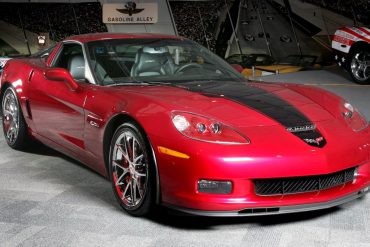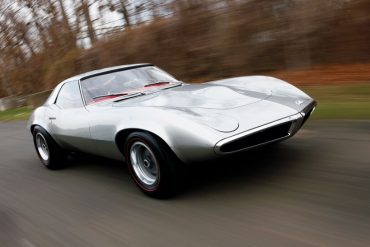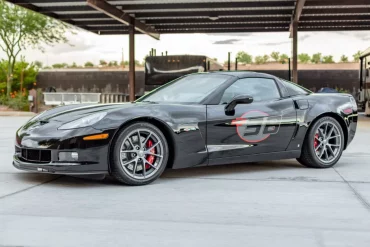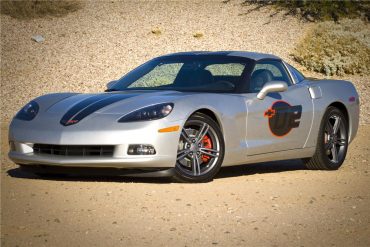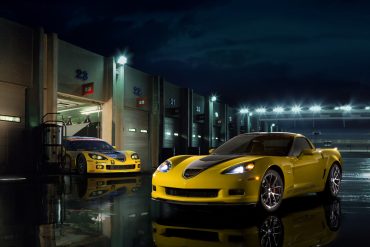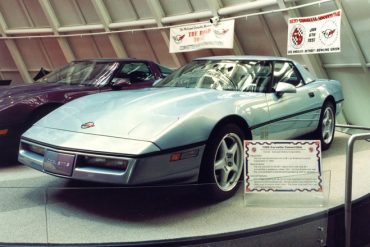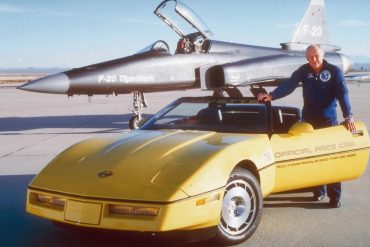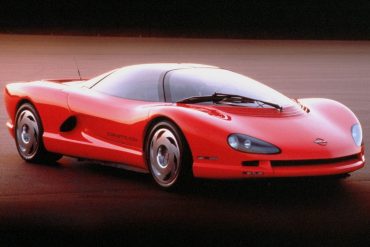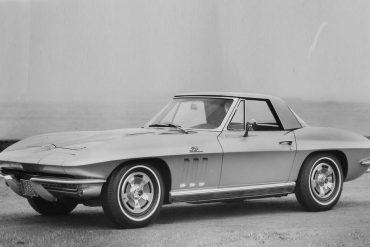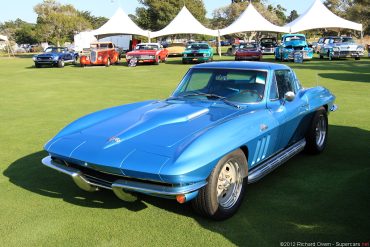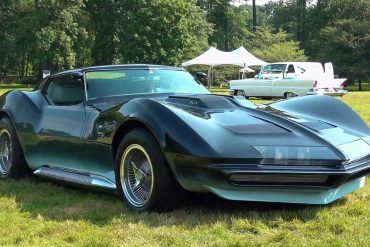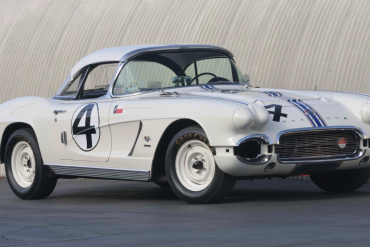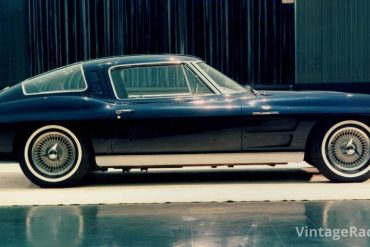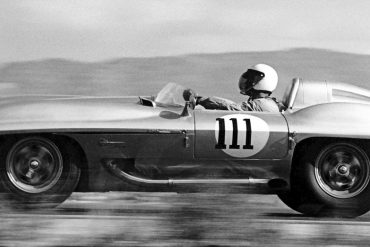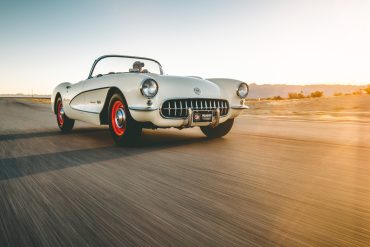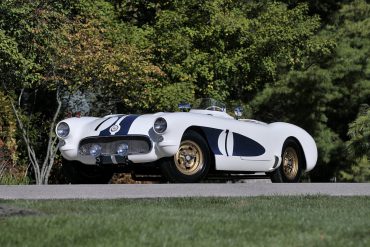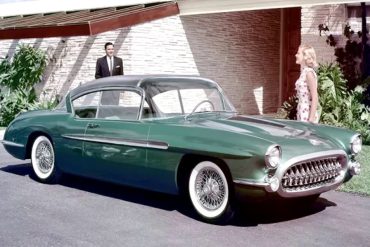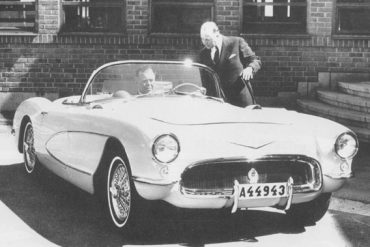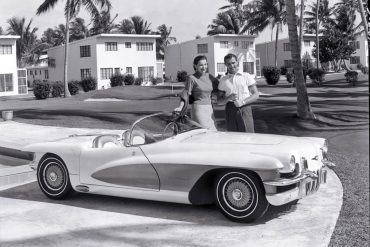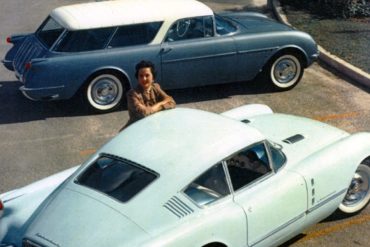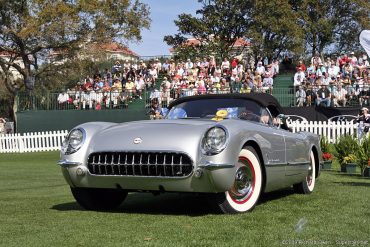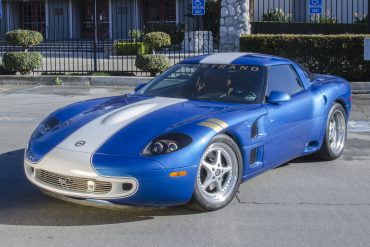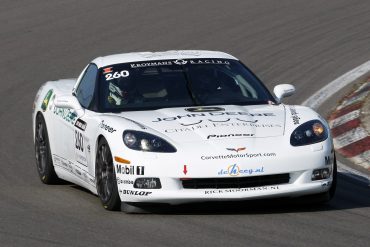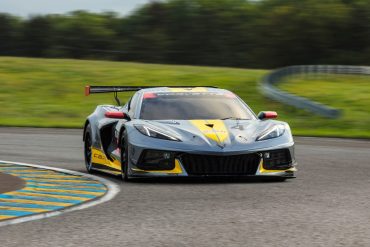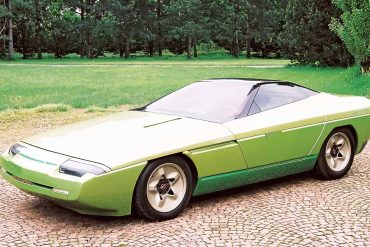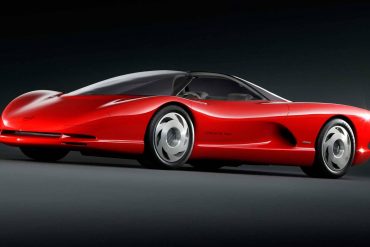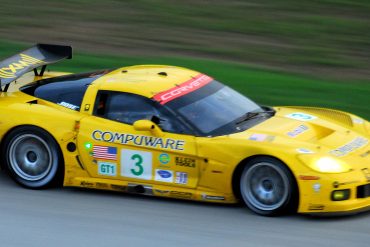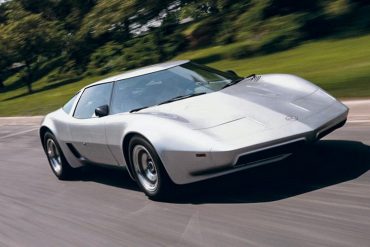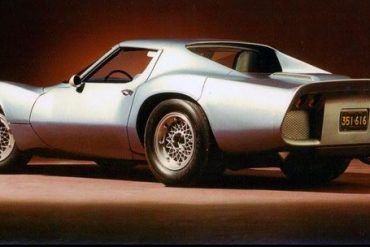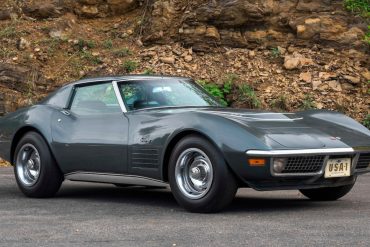The 427 Limited Edition option, code Q8A and Z44, was limited to 505 examples globally with 427 destined for North American customers. As a retirement gift to Wil Cooksey, the Corvette plant manager from 1993 to 2008, he chose the color scheme and hand signed and numbered the underside of the armrest console lids on all 505 examples in which this example is #6. As part of the package, the seats and the floor mats have “427” embroidery, and the center-console trim plate is color matched.
When first introduced to the world by Pontiac in 1964, the car showed so much promise that Chevrolet (allegedly) put a swift end to its development to prevent its production from hindering the sales of the Corvette. Afterall, with the introduction of the 1963 Split-Window Corvette, Chevy was finally seeing an increase in sales, something lacking for most of the first-gen.
There were only 20 Z06s produced with the Competition Sport package for worldwide purchase. This Z06 is powered by a 7.0-liter LS7 V8 engine producing 505hp and 424 ft/lbs torque, paired to the 6-speed manual transmission. The LS7 engine can propel this Z06 from 0-60 mph in 3.6 seconds. This Z06 CSR features leather interior, articulated sport seats, premium audio system, CD player and heads-up display.
Chevrolet introduced the limited production Competition Sport package for both the 2009 Corvette coupe and the Z06, bringing the look of Corvette's racing team to their non-ZR1 offerings, if not quite the performance. Both the Z06 and Coupe 1LT Vettes ordered with the Competition Sport package will get a track focus, which includes...
Chevrolet introduced the limited production Corvette GT1 Championship Edition at Sebring International Raceway. The GT1 Championship Edition (Regular Production Option GT1) commemorates the success of Corvette Racing and the Corvette C6R.
There were several successful attempts to build a convertible ZR-1, most of them by private people. The DR-1 was a GM prototype to test the structural integrity of the ZR-1 chassis when it would be topless. The car was built by American Sunroof Corporation (ASC) for Don Runkle, who was the vice-president of Advanced Engineering Staff, which explains the “DR-1” designation. It was a standard convertible transformed to ZR-1 specs.
The big news for 1986 was that a Corvette would pace the Indy 500 for the second time. Retired General Chuck Yeager was enjoying celebrity status as a result of the book and movie, “The Right Stuff.” But Chevrolet was still smarting from the heavy criticism over the ‘78 Corvette Pace Car debacle and decided that all 1986 Corvette convertibles were designated as “Pace Car Replica”.
The 1986 Corvette Indy Prototype was developed beyond clay modeling to the point of a fully-functioning, drivable car, though it was clearly understood that this car would never evolve beyond the prototype stage. Like the clay mock-up before it, development of the mid-engine Indy prototype began in 1985, pulling design cues from its predecessor.
For competition, race customers had a range of options available to them including the N03 36-Gallon Fuel Tank, closer rear axle ratios and the C48 Heater/Defroster Delete (-100). Most cars equipped like this came with either L78 or the L84 with Ram-Jet Fuel Injection.
For competition, race customers had a range of options available to them including the N03 36-Gallon Fuel Tank, closer rear axle ratios and the C48 Heater/Defroster Delete (-100). Most cars equipped like this came with either L78 or the L84 with Ram-Jet Fuel Injection.
The Manta Ray was actually the 1965 Mako Shark II (XP-830) with a few upgrades, so it featured many of the Mako II's outward features, such as side exhausts and a lower-body (along the rocker panels) silver paint job. The front end had a pointed chin spoiler and the headlights used 2 banks of 3 quartz-halogen lights.
Always on the hunt for greater speed and greater thrills, Delmo decided to replace the '61 he had been racing with a brand-new 1962 Chevy Corvette. Owing to his demonstrated skill behind the wheel and prior successes with Corvettes, Delmo had a close relationship with legendary chief engineer Zora Arkus-Duntov and enlisted his assistance with the new car. "It was easy," Delmo recalls. "I called Zora and said, 'Build me a race car.' The only other thing I said was to make it white."
The Stingray that never was. The stretched version of this new Corvette model for 1963 has rear seating and was built as ordered by Chevrolet chief Ed Cole. Larry Shinoda designed this coupe, that never went into production because the demand for the two seated Stingray already was overwelming. A running prototype of a 2+2-seat C2 Corvette intended to compete with the Ford Thunderbird was built, but the project was canceled.
In 1959, the bones of the SS were revived when Bill Mitchell secretly funded the Stingray race car. Mitchell purchased the chassis of the 1957 SS race car mule for $500 and had a design team create a new body. Mitchell felt the first generation Corvettes were too rounded and soft, so the Corvette Sting Ray Racer featured a sharper body edge that made it work.
The Airbox option package designated RPO 579D came with the Duntov-cammed, Rochester fuel-injected 283/283 HP V-8. It incorporated a fiberglass intake plenum on the drivers-side inner fender. Fed by an opening in the radiator bulkhead, it channeled cooler, denser outside air through an internal filter and along a rubberized duct to the Rochester fuel-injection.
In 1956, Ed Cole, then General Manager of Chevrolet, decided Corvette could be saved from extinction due to lagging sales by promoting the car as a performance car which could be raced in production classes. The first of these Corvettes was to debut at Daytona Beach for acceleration and top end speed trials, the 12 hour race at Sebring, and also possibly Le Mans.
On July of 1955, the Chevrolet design studio staff created a dream car for the 1956 GM Motorama shows, called Corvette Impala. The Corvette grille and grille surround are incorporated, as well as other Corvette components. This hardtop five-passenger sports sedan shows the name "Corvette Impala" on the front emblem and rear license plate.
In August of 1955 GM styling created an exclusive Corvette for Prince Bertil of Sweden, who reportedly placed his order direct with Harlow Curtice, GM President. All modifications were confined to the exterior. Visible in the frontal view are an entirely new, larger grille assembly with flat black screen instead of teeth and the replacement of the front emblem by a large "V".
The engineers came up with a unit-body construction that relied on strength coming from the side sills of the chassis. These contained the exhaust which probably easily overheated the cockpit, especially in the coupe. Unfortunately, GM fitted fake V6 engines in both cars with a concept valve train that included dual overhead camshafts.
The Corvair concept car was initially presented to the public at the 1954 Motorama at the Waldorf Astoria hotel in Manhattan. The Corvair presented at the Waldorf was not the same car that traveled to other Motorama shows throughout the year.
The 1954 Corvette was outfitted with several unique design features. These were the results of two design exercises that included both interior and exterior upgrades. Outwardly, this styling concept is distinguished by its sharkfin headlights which effectively split each headlight down the center.
As the story goes, when the Corvette ZR-1 came out in 1990, Dick Guldstrand saw an opportunity to create his vision of the perfect Grand Sport ride, instead of his name just getting slapped onto another Chevrolet product. He asked GM for fifteen ZR-1’s and some money. He got one car and permission to do whatever he wanted to do with it. And that’s exactly what he did. Called the "GS90", Dick's car would prove to be the most elaborate and expensive specialty Corvette ever built.
In late 2007 Corvette Europe approached the FIA seeking approval to race a C6 Coupe in the GT4 category. After much study the FIA approved their request. Kroymans shipped a new 2008 C6 Z51 six-speed coupe to Callaway Competition in Leingarten, Germany. In less than six weeks the Callaway team stripped the new car of all non-essential parts including carpet and standard seats.
Chevrolet begins a new chapter in its storied racing legacy with the introduction of the new mid-engine Corvette race car, known as the C8.R. The C8.R will be Chevrolet’s first mid-engine race car to compete in IMSA’s GTLM class and the first clean sheet race car design since the C5.R debuted in 1999. It will make its racing debut at Rolex 24 at Daytona on Jan. 25, 2020. The C8.R is based on the strong foundation of the 2020 Corvette Stingray.
In 1983, Bertone began to explore the possibility of approaching the US market with the Ramarro, an exercise in applied technology around mass-produced mechanics. The Ramarro, which means "green lizard" in Italian, was created on the chassis of the well-known Chevrolet Corvette, and the underlying concept aimed to modify the layout of the mechanical components.
Mid-Engine Prototypes: The 1985 Corvette Indy Concept, The 1986 Corvette Indy and the 1990 CERV III Since the introduction of...
The Corvette C6-R race car debuted at the 12 Hours of Sebring in March 2005. The two-car, factory-backed Chevrolet sports car program competed in the production-based GT1 class (formerly GTS) of American Le Mans Series as well as the legendary 24 Hours of Le Mans in France. It was the most technically advanced sports car ever developed by GM, culling years of experience from the Corvette C5-R as well as the advancements brought forth from the next-gen Corvette C6 and Z06.
The Chevrolet Aerovette (originally designated Experimental Project XP-882) was developed in the late 1960's under the watchful eyes and mind of Zora Arkus-Duntov. Unlike the XP-819, which ultimately proved to have too much rear weight bias, Duntov focused on developing the Aerovette as a mid-engine platform.
The XP-819 Corvette prototype was introduced in 1964 by Frank WInchell and Larry Shinoda as the first, experimental, rear-engine Corvette coupe. The XP-819 was developed in the mid-1960's as an engineering exercise to determine if a rear-engine platform was right for the Corvette program. During that time, Chevrolet was still under a racing ban.
Did you know that the earliest ZR1 Corvettes came into existence long before any of these later iterations? If not, then take a few minutes to acquaint yourself with one the rarest small-block production Corvettes of all time - the 1970-1972 Corvette ZR1. From 1970 to 1972, Chevrolet offered the ZR1 Special Engine Package, which featured a small-block LT1 engine.


